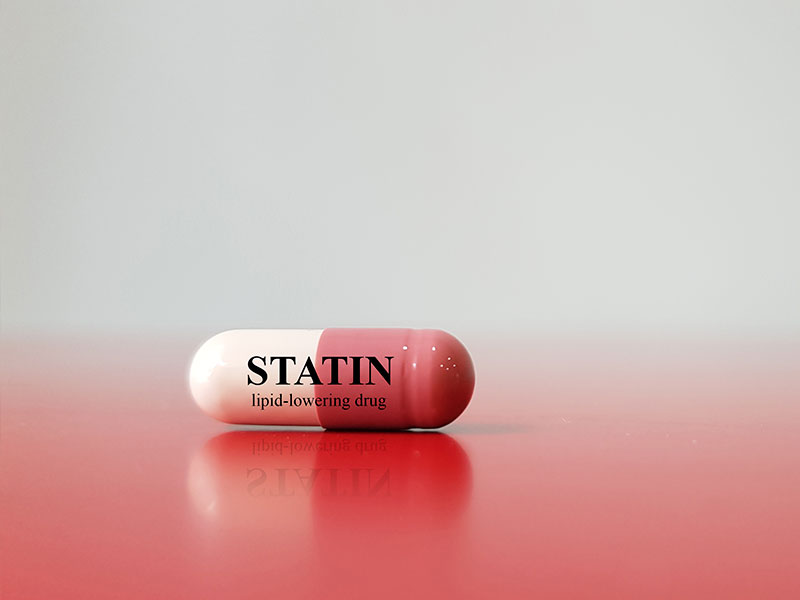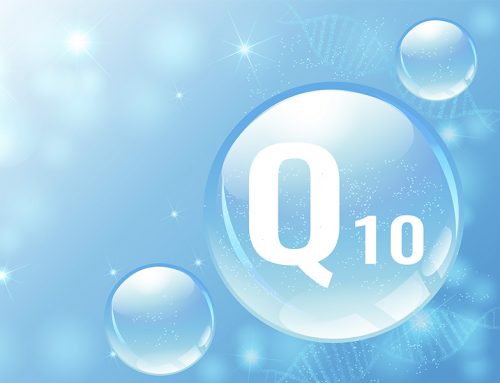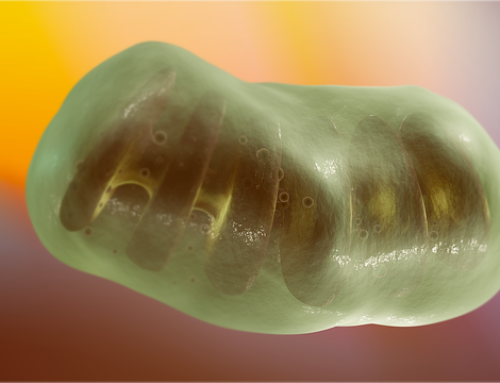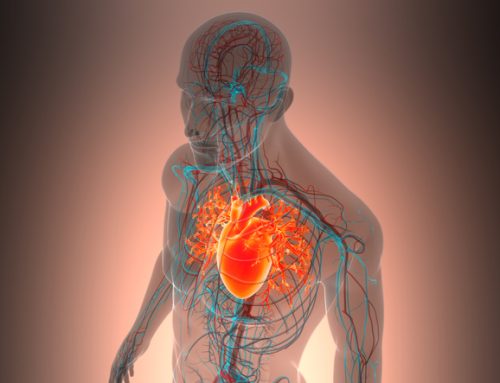
Yes, cholesterol lowering statin medications have proven to be effective at lowering cholesterol. Yes, statin medications are generally well-tolerated. But … statin medications inhibit the body’s synthesis of Coenzyme Q10. Anyone taking a statin medication needs to be taking a supplement to restore the depleted Coenzyme Q10.
Last week, we looked at the question of Coenzyme Q10 supplementation for chronic heart failure patients. We know that chronic heart failure patients have abnormally reduced levels of Coenzyme Q10 in both their blood and their heart muscle tissue [Folkers 1985, Kitamura 1984]. We know that supplementation with Coenzyme Q10 can increase blood Coenzyme Q10 levels and can improve outcomes in the treatment of chronic heart failure and in coronary artery bypass surgery [Morisco 1993, Mortensen 2014, Rosenfeldt 2002].
Coenzyme Q10 and the elderly
By now, it is well-documented that the human bio-synthesis of Coenzyme Q10 declines steadily in most people starting at age 40 [Kalen 1989, Soderberg 1990]. Data from the KiSel-10 study show that daily supplementation of elderly people, aged 70 – 88 years, with Coenzyme Q10 and selenium has several beneficial health effects:
- Reduced incidence of cardiovascular death
- Reduced number of hospitalizations and reduced length of hospital stay
- Reduced bio-markers for inflammation and for atherosclerosis
- Reduced bio-markers for oxidative stress
- Better cardiac function on echocardiograms
- Slowing of the increase in cardiac wall tension
In sum, the KiSel-10 study shows that there is an interrelationship between selenium and Coenzyme Q10 that can be exploited for therapeutic benefit if the two substances are used together [Alehagen 2015]. The combination of Coenzyme Q10 and selenium is effective both as a preventive measure in middle-aged and elderly persons at risk of developing heart disease and as an adjunctive treatment of patients already diagnosed with heart failure.
What about people taking statin medications?
Statin medications are medications with a demonstrated effectiveness at lowering LDL cholesterol. As such, they have been associated with reductions in the number of heart attacks and the number of deaths from heart attacks.
Statin medications work by inhibiting the action of the HMG Coenzyme A-reductase enzyme. It is now well-known that the use of statin medications inhibits not only the body’s bio-synthesis of cholesterol but also the bio-synthesis of Coenzyme Q10 (ubiquinone). Published studies document the adverse effect of the following statin medications on the bio-synthesis of Coenzyme Q10:
- Crestor (rosuvastatin) [McMurray 2010]
- Lipitor (atorvastatin) [Pourmoghaddas 2014]
- Mevacor (lovastatin) [Folkers 1990, Mortensen 1997]
- Pravachol (pravastatin) [Ghirlanda 1993, Mortensen 1997]
- Simcor (simvastatin) [Bargossi 1994, De Lorgeril 1999]
Littarru and Langsjoen [2007] have pointed out that Coenzyme Q10 levels are depleted not only in plasma or serum but also in the platelets and in the lymphocytes of patients treated with statins. Therefore, it seems logical that the depletion of Coenzyme Q10 is caused by that statin medications’ interfering with the natural bio-synthesis of Coenzyme Q10 and not just by the reduced number of lipoproteins to transport the Coenzyme Q10 molecules in the blood.
Coenzyme Q10 supplementation for people taking statin medications
It seems logical that all people taking statin medications – and especially elderly people and people diagnosed with chronic heart failure — should also be taking a daily Coenzyme Q10 supplement. The purpose of the supplementation with Coenzyme Q10 is to prevent the significant depletions of blood and tissue Coenzyme Q10 concentrations that are associated with the taking of statin medications.
The declines in the blood levels and in the clinical status of patients on statin medications can be prevented or reversed through the use of supplemental Coenzyme Q10 [Folkers 1990, Bargossi 1994, Miyake 1999].
Coenzyme Q10 does not interfere with the cholesterol lowering work of the statin medications
Miyake et al [1999] did a study of non-insulin-dependent diabetic patients and noted the following results:
- Treatment with simvastatin alone significantly reduced serum cholesterol levels and serum Coenzyme Q10 levels.
- Subsequent supplementation with Coenzyme Q10 significantly increased the patients’ serum Coenzyme Q10 levels without affecting the patients’ lowered cholesterol levels.
Wong et al [2001] did a study that showed that the beneficial anti-inflammatory effect of simvastatin on white blood cells was not affected by supplementation with Coenzyme Q10.
The rationale for Coenzyme Q10 together with a statin medication
What do we know at present?
- Taking a statin medication is strongly associated with significantly lower bio-synthesis of Coenzyme Q10.
- Coenzyme Q10 is an essential component in the process of cellular energy production.
- Coenzyme Q10 is a potent fat-soluble antioxidant that protects LDL cholesterol against oxidative damage.
- Coenzyme Q10 also serves to regenerate the reduced forms of Vitamin C and Vitamin E.
- Coenzyme Q10 depletion plays a significant role in the development of heart failure – the energy-starved heart is the underlying cause of heart failure.
- Elderly people produce less and less Coenzyme Q10.
Consequently, it would seem to be unwise to prescribe statin medications for elderly people and for heart failure patients and, then, not to prescribe Coenzyme Q10 for people in these categories.
Given that the taking of statin medications by younger, healthier patients also results in significant depletion of serum Coenzyme Q10 levels and given that Coenzyme Q10 supplements are safe and affordable and do not interfere with the cholesterol lowering activity of the statin medications, it would seem wise to prescribe a Coenzyme Q10 supplement whenever a statin medication is prescribed.
Need to re-consider statin medication guidelines?
Statin medications have been used for nearly thirty years now. Their use has reduced cholesterol levels and has reduced the number of heart attacks. However, it should be noted that the increases in the frequency of diagnoses of heart failure have been spectacular during the same 30-year period.
In a 2015 article, Dr. Okuyama and Dr. Langsjoen have spelled out the pharmacological mechanisms involved in the worsening of chronic heart failure and atherosclerosis through the use and over-use of statin medications. They point to the following undesirable effects of statin medications;
- the inhibition of the bio-synthesis of Coenzyme Q10
- the inhibition of the bio-synthesis of the selenium containing proteins
- the inhibition of the bio-synthesis of Vitamin K2
Footnote:
A sub-set analysis of CORONA (Controlled Rosuvastatin Multinational Study in Heart Failure) study data showed that rosuvastatin statin therapy at the level of 10 milligrams per day reduced plasma Coenzyme Q10 concentrations significantly by 39%. In the study, more rosuvastatin patients than control patients suffered cardiovascular death, heart attack, or stroke. The patients taking the rosuvastatin had greater all-cause mortality and more coronary events than did the control patients. These outcomes did not reach the pre-specified level of statistical significance, but, to Dr. Svend Aage Mortensen, lead researcher on the Q-Symbio study, such outcomes did seem to be clinically relevant. Furthermore, the authors of the CORONA study were hesitant to rule out an adverse effect of the statin therapy without accompanying Coenzyme Q10 supplementation.
Sources:
Alehagen, U., & Aaseth, J. (2015). Selenium and coenzyme Q10 interrelationship in cardiovascular diseases–A clinician’s point of view. Journal of Trace Elements in Medicine And Biology, 31157-162.
Bargossi, A. M., Battino, M., Gaddi, A., Fiorella, P. L., Grossi, G., & Barozzi, G. (1994). Exogenous CoQ10 preserves plasma ubiquinone levels in patients treated with 3-hydroxy-3-methylglutaryl coenzyme A reductase inhibitors. International Journal of Clinical & Laboratory Research, 24(3), 171-176.
De Lorgeril, M., Salen, P., Bontemps, L., Belichard, P., Geyssant, A., & Itti, R. (1999). Effects of lipid-lowering drugs on left ventricular function and exercise tolerance in dyslipidemic coronary patients, J. Cardiovasc. Pharmacol, 33(3), 473–478.
Folkers, K., Vadhanavikit, S., & Mortensen, S. A. (1985). Biochemical rationale and myocardial tissue data on the effective therapy of cardiomyopathy with coenzyme Q10. Proceedings of The National Academy of Sciences, 82(3), 901-904.
Folkers, K., Langsjoen, P., Willis, R., Richardson, P., Xia, L. J., Ye, C. Q., & Tamagawa, H. (1990). Lovastatin decreases coenzyme Q levels in humans. Proceedings of The National Academy Of Sciences, 87(22), 8931-8934.
Ghirlanda, G., Oradei, A., Manto, A., Lippa, S., Uccioli, L., Caputo, S., & Littarru, G. P. (1993). Evidence of plasma CoQ10-lowering effect by HMG-CoA reductase inhibitors: a double-blind, placebo-controlled study. Journal of Clinical Pharmacology, 33(3), 226-229.
Kalén, A., Appelkvist, E. L., & Dallner, G. (1989). Age-related changes in the lipid compositions of rat and human tissues. Lipids, 24(7), 579-584.
Kitamura, N., Yamaguchi, A., Masami, O., Sawatani, O. & Atobe, M. (1984). Myocardial tissue level of Coenzyme Q10 in patients with cardiac failure. In: Biomedical and Clinical Aspects of Coenzyme Q, (Vol. 4), K. Folkers & Y. Yamamura, eds. Amsterdam: Elsevier. 243–252.
Littarru, G. P., & Langsjoen, P. (2007). Coenzyme Q10 and statins: biochemical and clinical implications. Mitochondrion, 7 SupplS168-S174.
McMurray, J. V., Dunselman, P., Wedel, H., Cleland, J. F., Lindberg, M., Hjalmarson, A., & Wikstrand, J. (2010). Coenzyme Q10, rosuvastatin, and clinical outcomes in heart failure: a pre-specified substudy of CORONA (controlled rosuvastatin multinational study in heart failure). Journal of The American College of Cardiology, 56(15), 1196-1204.
Miyake, Y., Shouzu, A., Nishikawa, M., Yonemoto, T., Shimizu, H., Omoto, S., Hayakawa, T. & Inada, M. (1999). Effect of treatment with 3-hydroxy-3-methylglutaryl coenzyme A reductase inhibitors on serum coenzyme Q10 in diabetic patients, Arzneimittelforschung 49(4), 324–329.
Morisco, C., Trimarco, B., & Condorelli, M. (1993). Effect of coenzyme Q10 therapy in patients with congestive heart failure: a long-term multicenter randomized study. The Clinical Investigator, 71(8 Suppl), S134-S136.
Mortensen, S. A., Leth, A., Agner, E., & Rohde, M. (1997). Dose-related decrease of serum coenzyme Q10 during treatment with HMG-CoA reductase inhibitors. Molecular Aspects Of Medicine, 18 SupplS137-S144.
Mortensen, S. A., Rosenfeldt, F., Kumar, A., Dolliner, P., Filipiak, K. J., Pella, D., & … Littarru, G. P. (2014). The effect of coenzyme Q10 on morbidity and mortality in chronic heart failure: results from Q-SYMBIO: a randomized double-blind trial. JACC. Heart Failure, 2(6), 641-649.
Okuyama, H., Langsjoen, P. H., Hamazaki, T., Ogushi, Y., Hama, R., Kobayashi, T., & Uchino, H. (2015). Statins stimulate atherosclerosis and heart failure: pharmacological mechanisms. Expert Review of Clinical Pharmacology, 8(2), 189-199.
Pourmoghaddas, M., Rabbani, M., Shahabi, J., Garakyaraghi, M., Khanjani, R., & Hedayat, P. (2014). Combination of atorvastatin/coenzyme Q10 as adjunctive treatment in congestive heart failure: A double-blind randomized placebo-controlled clinical trial. ARYA Atherosclerosis, 10(1), 1-5.
Rosenfeldt, F. L., Pepe, S., Linnane, A., Nagley, P., Rowland, M., Ou, R., & Lyon, W. (2002). The effects of ageing on the response to cardiac surgery: protective strategies for the ageing myocardium. Biogerontology, 3(1-2), 37-40.
Soderberg, M., Edlund, C., Kristensson, K., and Dallner, G. (1990). Lipid composition of different regions of the human brain during aging, J. Neurochem. 54(2) (1990), 415–423.
Wong, B., Lumma, W. C., Smith, A. M., Sisko, J. T., Wright, S. D., & Cai, T. Q. (2001). Statins suppress THP-1 cell migration and secretion of matrix metalloproteinase 9 by inhibiting geranylgeranylation. Journal of Leukocyte Biology, 69(6), 959-962.









Leave A Comment